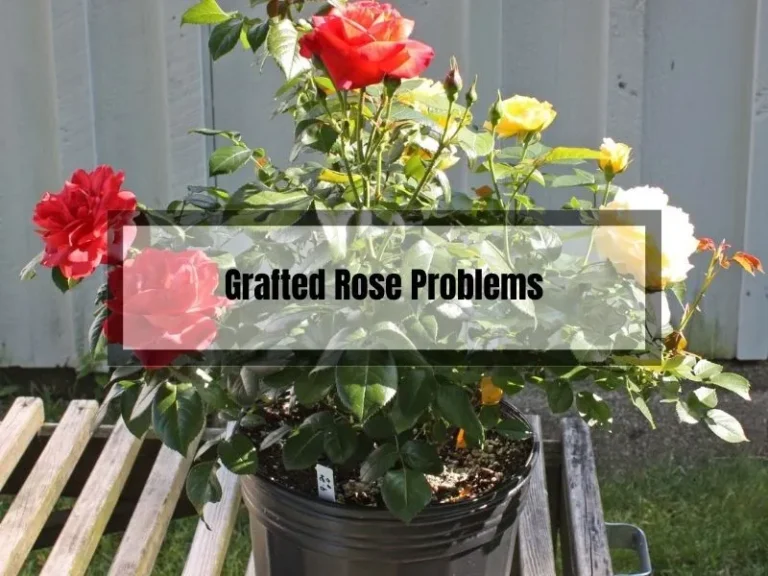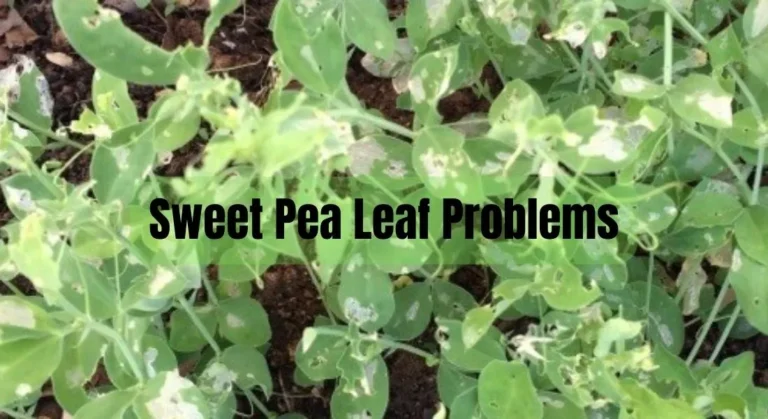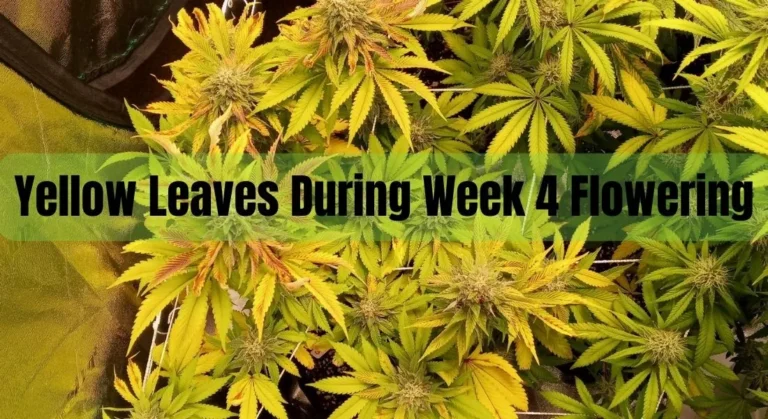Clivia Plant Problems: Common Issues and How to Fix Them
Are you a plant enthusiast looking to care for Clivia plants? These vibrant plants with orange, red, and yellow blooms can brighten any indoor garden. Yet, like all plants, Clivias are susceptible to various issues that affect their growth and health.
Recognizing common problems is crucial. From root rot to pests and diseases, several challenges can arise. Fortunately, preventive measures and treatments are available.
In this article, we’ll explore common Clivia plant issues and how to prevent and treat them, whether you’re a seasoned plant parent or just starting out.
Key Takeaways
- Recognizing common Clivia plant issues is crucial to maintaining the health of your plant.
- Preventive measures can be taken to avoid problems, as well as treatments available if your plant does encounter an issue.
- By following the tips provided in this guide, you can keep your Clivia plants healthy and vibrant.
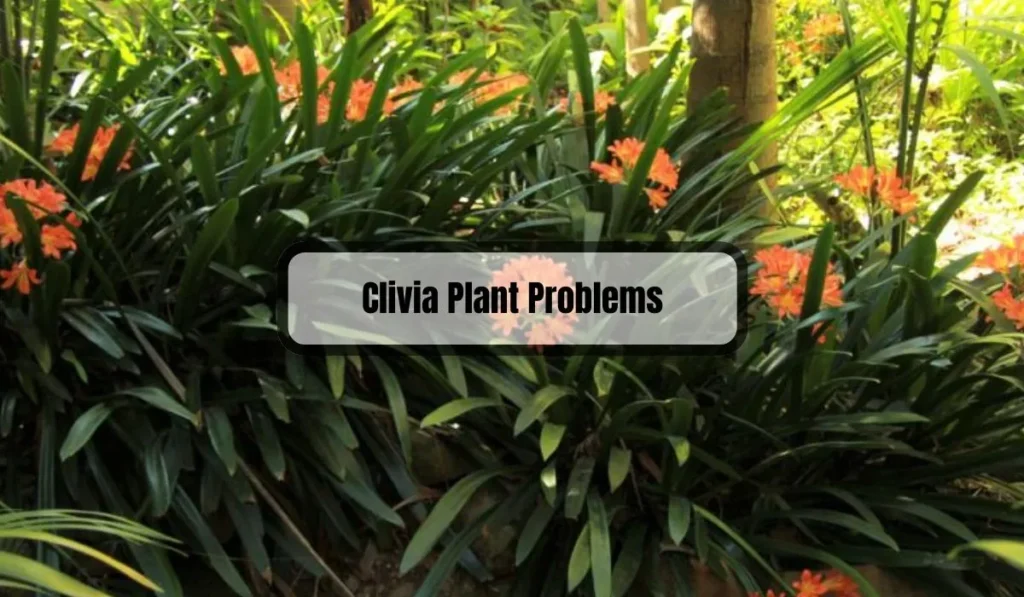
Clivia Plant Problems
If you’re a fan of indoor plants, you might have come across the Clivia plant. These beautiful plants with their bright orange or yellow flowers can add a pop of color to any room.
However, just like any other plant, Clivia plants can face a few problems. In this section, we’ll take a look at some common Clivia plant problems and how to troubleshoot them.
Pests
One of the most common problems that Clivia plants face is pest infestations. Here are some pests that you should keep an eye out for:
- Mealybugs: These pests look like small pieces of cotton and can be found on the leaves and stems of the plant. They feed on the sap of the plant and can cause yellowing and wilting of the leaves.
- Scale insects: These pests look like small, brown bumps on the leaves and stems of the plant. They also feed on the sap of the plant and can cause yellowing and wilting of the leaves.
- Spider mites: These pests are tiny, and you might not even notice them until they have caused significant damage to the plant. They can cause yellowing and wilting of the leaves, and you might notice webbing on the plant.
To get rid of these pests, you can use insecticidal soap or neem oil. Make sure to follow the instructions carefully and apply the treatment as directed. You might need to repeat the treatment a few times to get rid of the pests completely.
Diseases
Clivia plants can also face a few diseases. Here are some common diseases that you should keep an eye out for:
- Root rot: This disease is caused by overwatering the plant. The roots of the plant start to rot, and the plant might wilt and die. To prevent root rot, make sure to water the plant only when the top inch of soil is dry.
- Leaf spot: This disease is caused by a fungus and can cause brown spots on the leaves of the plant. To treat leaf spot, you can use a fungicide. Make sure to follow the instructions carefully and apply the treatment as directed.
Failure to Flower
Another common problem that Clivia plants face is failure to flower. This can be caused by a few factors, such as:
- Lack of sunlight: Clivia plants need bright, indirect light to bloom. Make sure to place the plant near a sunny window.
- Lack of nutrients: Clivia plants need regular fertilization to bloom. Make sure to use a fertilizer that is high in phosphorus.
- Overcrowding: Clivia plants need enough space to grow and bloom. If the plant is overcrowded, it might not bloom.
Recognizing Common Clivia Plant Issues
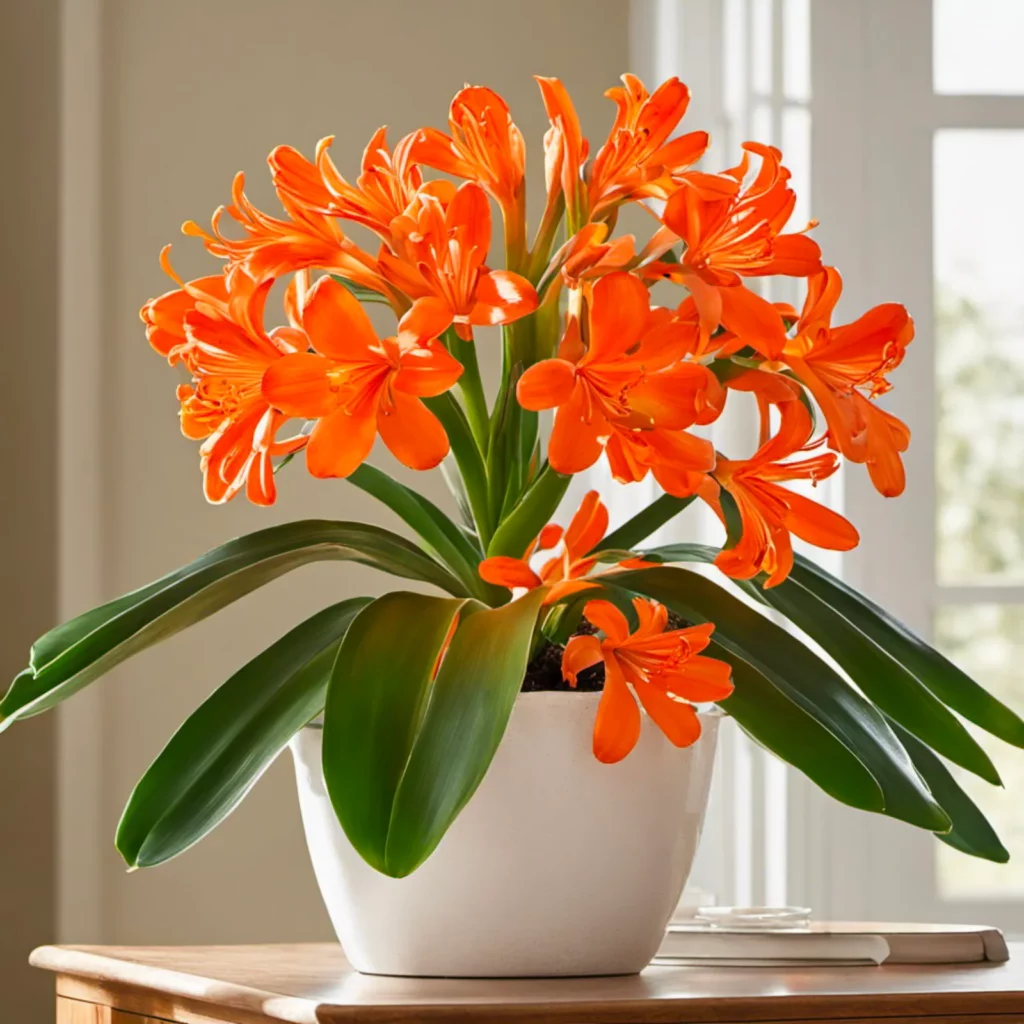
As a plant lover, you know that sometimes things don’t go as planned. Even the most experienced gardeners can have trouble with their plants. Clivia plants are no exception. Here are some common issues you may encounter while growing Clivia plants.
Yellowing Leaves
One of the most common problems with Clivia plants is yellowing leaves. This can be caused by several factors, including overwatering, underwatering, nutrient deficiencies, and exposure to direct sunlight.
To fix this, check your watering schedule and make sure you are not over or underwatering your plant. If the soil is too dry, water it more frequently. If the soil is too wet, let it dry out before watering again.
If you suspect a nutrient deficiency, add a balanced fertilizer to the soil. If your plant is getting too much direct sunlight, move it to a spot with indirect sunlight. Yellowing leaves can also be a sign of a more serious problem like a fungal disease. If you notice other symptoms like brown spots or wilting, consult a gardening expert.
Wilting Blooms
Another common issue with Clivia plants is wilting blooms. This can be caused by several factors, including underwatering, overwatering, or exposure to extreme temperatures. To fix this, make sure your plant is getting enough water.
If the soil is too dry, water your plant more frequently. If the soil is too wet, let it dry out before watering again.
If your plant is exposed to extreme temperatures, move it to a spot with more moderate temperatures. Wilting blooms can also be a sign of a more serious problem like a pest infestation. Check your plant for signs of pests like mealybugs or spider mites.
Root Rot
Root rot is a fungal disease that can affect Clivia plants. This disease is caused by overwatering and can cause the roots to rot and die. To prevent root rot, make sure your plant is not sitting in water and that the soil is well-draining. If you suspect your plant has root rot, remove it from the soil and cut away any affected roots.
Replant the plant in fresh, well-draining soil and make sure to water it less frequently. Root rot can also be a sign of a more serious problem like a pest infestation. Check your plant for signs of pests like mealybugs or spider mites.
Preventing Clivia Plant Problems
If you want your Clivia plant to thrive, you must provide the ideal growing conditions. Here are three essential factors that you need to consider:
Proper Watering Techniques
Clivia plants do not like to be overwatered or underwatered. Overwatering can cause root rot, while underwatering can lead to wilting and stunted growth.
To avoid these problems, water your Clivia plant only when the top inch of soil is dry. When watering, make sure to saturate the soil thoroughly, but do not let the plant sit in standing water.
Ideal Soil Conditions
Clivia plants prefer well-draining soil with a slightly acidic pH level between 5.5 and 6.5. The soil should be rich in organic matter, such as compost or peat moss. Avoid using heavy soil mixes that can retain too much moisture and cause root rot.
If you are unsure about the quality of your soil, you can test it using a soil pH meter or take a sample to a local garden center for analysis.
Appropriate Light Exposure
Clivia plants thrive in bright, indirect light. They can tolerate some direct sunlight, but too much can scorch their leaves.
Position your Clivia plant near a sunny window that gets filtered light or place it in a shaded area of your garden. If you notice that your plant is not getting enough light, you can supplement with artificial light using a grow light.
By following these simple guidelines, you can prevent most Clivia plant problems. Remember to check your plant regularly for signs of pests or diseases, and take action promptly if you notice any issues. With proper care, your Clivia plant can live for many years and produce beautiful blooms year after year.
Treating Clivia Plant Problems
Clivia plants are generally low-maintenance, but they can still encounter problems. Here are some tips on how to treat common clivia plant problems:
Using Organic Fertilizers
One of the most common problems with clivia plants is lack of nutrients. If you notice that your plant’s leaves are yellowing or the flowers are small, it may be time to fertilize.
Using organic fertilizers is the best way to ensure your plant gets the nutrients it needs without harming the environment. Here are some organic fertilizers you can use:
- Compost: Compost is a great way to provide your plant with a slow-release source of nutrients. Simply mix some compost into the soil around the plant.
- Fish emulsion: Fish emulsion is a liquid fertilizer made from fish waste. It is high in nitrogen, which is essential for plant growth. Dilute the fish emulsion according to the instructions on the label and use it to water your plant.
- Epsom salt: Epsom salt is a great source of magnesium, which is important for plant growth. Mix a tablespoon of Epsom salt into a gallon of water and use it to water your plant.
Implementing Pest Control
Pests can be a big problem for clivia plants. Here are some ways to control pests:
- Neem oil: Neem oil is a natural pesticide that can be used to control a variety of pests, including aphids, mealybugs, and spider mites. Dilute the neem oil according to the instructions on the label and spray it on your plant.
- Soap spray: Soap spray is an effective way to control pests like aphids and spider mites. Mix a tablespoon of liquid soap with a gallon of water and spray it on your plant.
- Diatomaceous earth: Diatomaceous earth is a natural pesticide that can be used to control pests like slugs and snails. Sprinkle a thin layer of diatomaceous earth around the base of your plant.
Pruning Damaged Areas
If your clivia plant has damaged leaves or flowers, it is important to prune them to prevent the problem from spreading. Here are some tips on pruning:
- Use clean, sharp scissors or pruning shears to make the cut.
- Cut the damaged area off at the base of the stem.
- Dispose of the damaged leaves or flowers in a sealed plastic bag to prevent the spread of disease.
By following these tips, you can keep your clivia plant healthy and beautiful.
Frequently Asked Questions (FAQs)
What is the best fertilizer for clivias?
Clivias are easy to care for and do not require much fertilization. However, if you want to give your clivia plant a little extra boost, use a balanced fertilizer with equal amounts of nitrogen, phosphorus, and potassium. You can also use a slow-release fertilizer once a year in the spring. Avoid over-fertilizing, as this can damage the roots and leaves of your plant.
How to revive a clivia plant?
If your clivia plant is looking a little sad and wilted, there are a few things you can do to revive it. First, check the soil moisture. Overwatering or underwatering can cause your plant to wilt. Make sure the soil is moist but not soggy. You can also trim off any dead or yellowing leaves and move your plant to a brighter location with indirect sunlight. Finally, try fertilizing your plant with a balanced fertilizer to give it a little extra boost.
Planting clivia in the ground?
Clivias can be planted in the ground in areas with mild winters and well-draining soil. Choose a location with indirect sunlight or partial shade. Dig a hole twice the size of the clivia’s root ball and add compost or organic matter to the soil. Plant the clivia at the same depth it was in its container and water thoroughly. Mulch around the base of the plant to retain moisture and suppress weeds.
What is eating my clivia leaves?
Several insects can cause problems for clivia plants, including mealybugs, scale insects, and spider mites. Mealybugs are small, white insects that feed on the sap of your plant and leave a sticky residue behind. Scale insects are small, brown or black insects that attach themselves to the leaves and stems of your plant. Spider mites are tiny, red or brown insects that create webs on your plant. To get rid of these pests, wipe the leaves with a damp cloth or use an insecticidal soap.
How to grow clivia in pots?
Clivias are great for growing in pots and can be grown indoors or outdoors. Choose a pot that is slightly larger than the clivia’s root ball and has drainage holes. Fill the pot with a well-draining potting mix and plant the clivia at the same depth it was in its container. Water thoroughly and place the pot in a bright location with indirect sunlight. Avoid overwatering, as this can cause root rot.
How to get rid of mealybugs on clivia?
Mealybugs are small, white insects that can infest your clivia plant and leave a sticky residue behind. To get rid of them, wipe the leaves with a damp cloth or use an insecticidal soap. You can also use neem oil or a mixture of water and rubbing alcohol to kill the bugs. If the infestation is severe, you may need to use a systemic insecticide.
Conclusion
In conclusion, Clivia plants are a beautiful addition to any indoor garden or outdoor landscape. However, they can be susceptible to a variety of problems that can stunt their growth or even kill them. By understanding the common issues that Clivia plants face and taking the necessary steps to address them, you can ensure that your plants thrive.
Some of the most common problems with Clivia plants include overwatering, underwatering, exposure to direct sunlight, nutrient deficiencies, and pests and diseases. To avoid these issues, make sure to provide your Clivia plant with the right amount of water, light, and nutrients. Keep an eye out for pests and diseases, and take action quickly if you notice any signs of infestation.
When it comes to watering your Clivia plant, be mindful of the soil’s moisture level. Only water your plant when the surface of the soil has become dry, and avoid wetting the foliage of the plant when doing so. Overwatering can cause root rot, crown rot, and other fungal diseases, while underwatering can cause the leaves to turn yellow or brown and become wilted.
If you notice that your Clivia plant is not getting enough light, move it to a brighter location. However, be careful not to expose it to direct sunlight, which can scorch the leaves and cause them to wilt. To ensure that your plant gets the right nutrients, use a balanced fertilizer that is specifically designed for Clivia plants.
Finally, keep an eye out for pests and diseases that can damage your Clivia plant. Common pests include spider mites, mealybugs, and scale insects, while common diseases include leaf spot and root rot. If you notice any signs of infestation or disease, take action quickly to prevent the problem from spreading.
By following these tips and taking good care of your Clivia plant, you can enjoy its beautiful blooms for years to come. Remember to keep an eye out for any signs of problems and take action quickly to address them. With a little bit of care and attention, your Clivia plant can thrive and bring joy to your home or garden.



